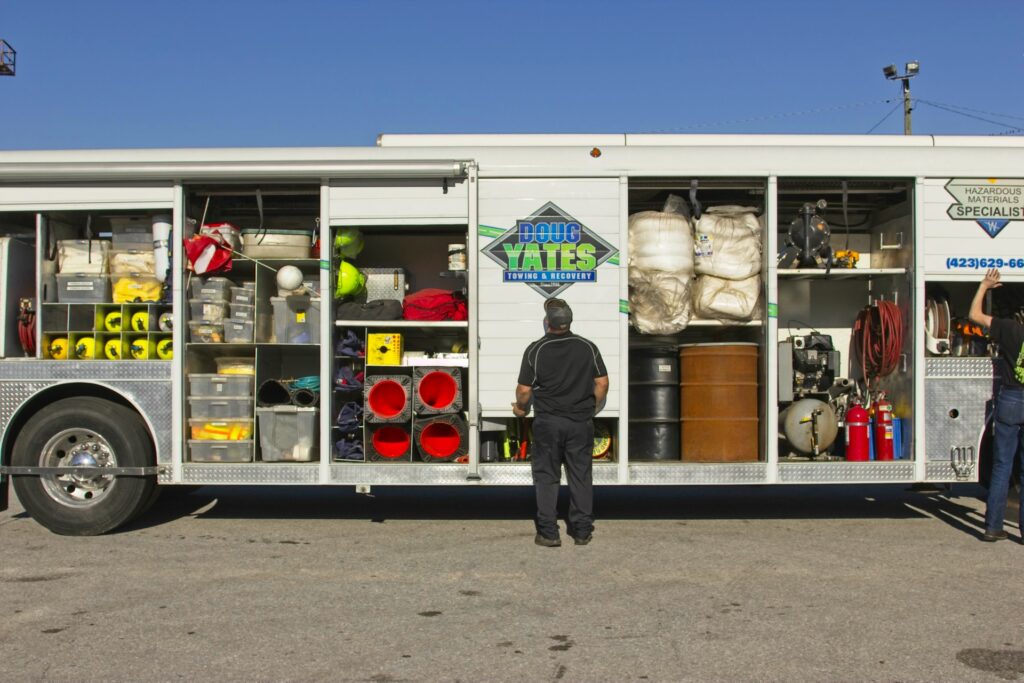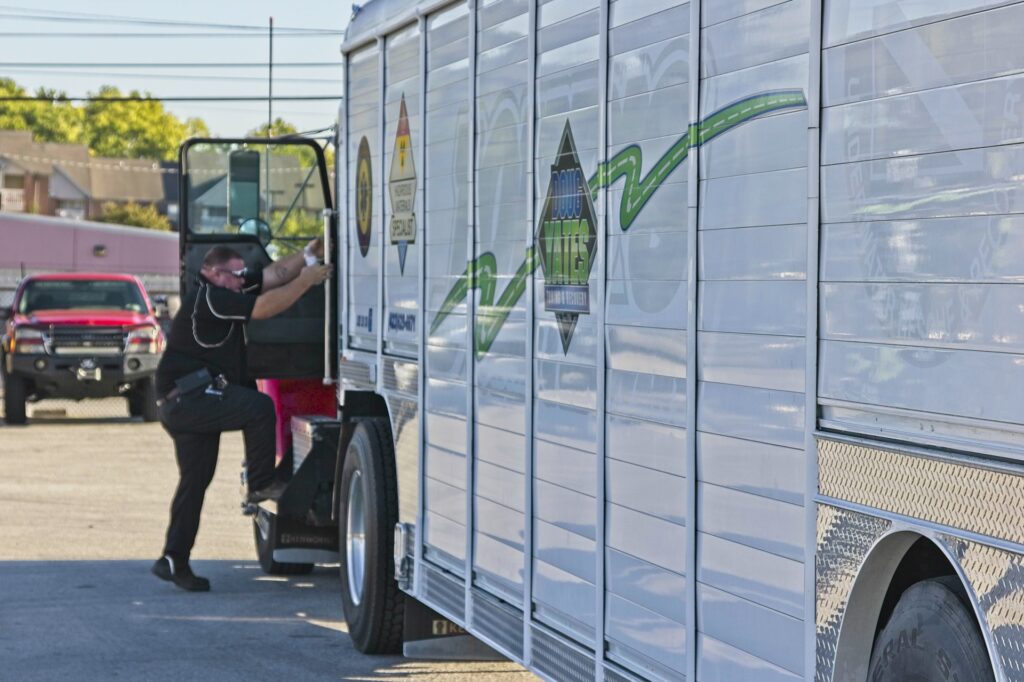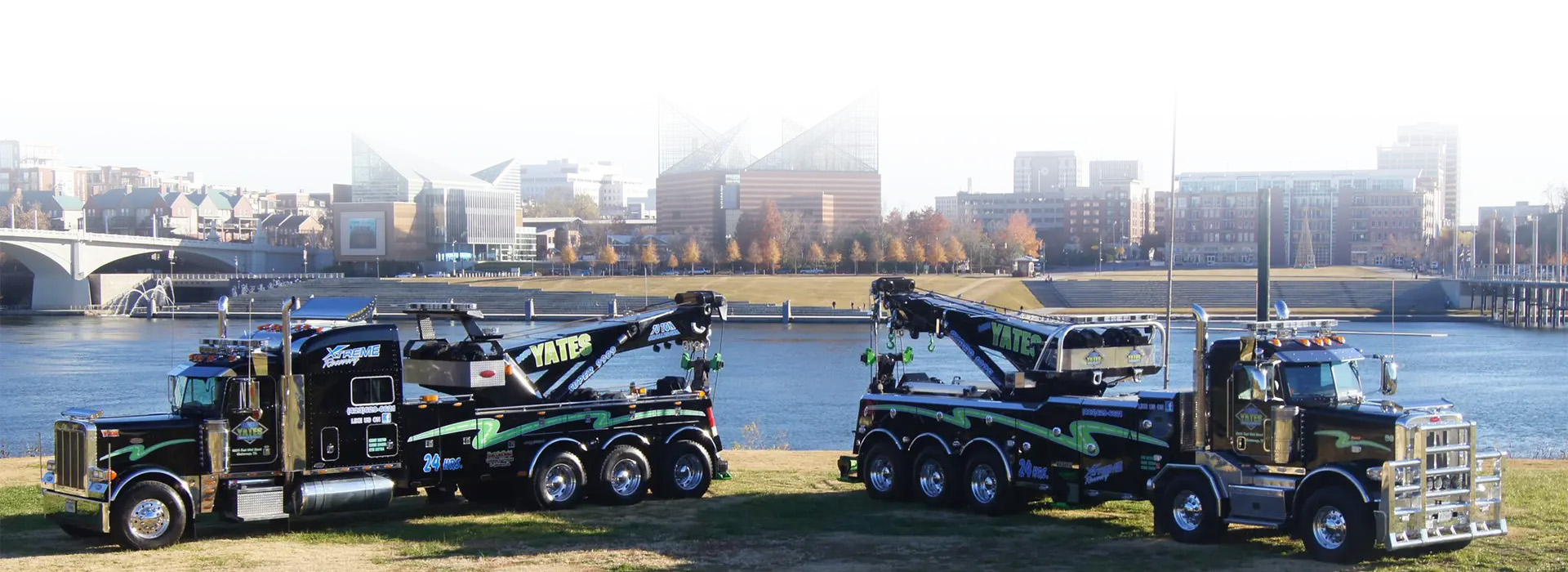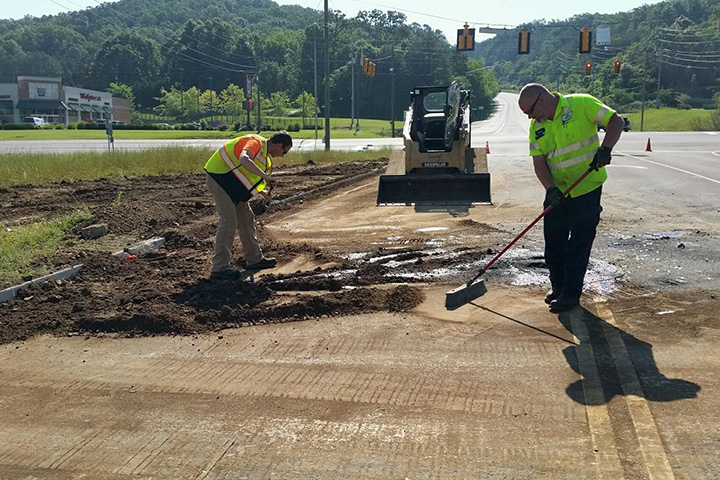A hazardous material spill that results from a traffic accident are either spills of vehicle fluids, hazardous material cargoes, or a combination of both. To clean up and have the roads back to normal, first responders should have knowledge of the many safety, regulatory, disposal guidelines, and documented clean-up practices for hazardous material spills. Here Doug Yates Towing & Recovery details the process taken after a hazardous material spill occurs.
Types Of Hazardous Material Spills
Vehicle Fluid Spill
These kinds of spills are of materials that are used in your vehicle. The most common hazardous materials used in vehicles include fuel, radiator coolant (ethylene glycol), transmission fluid, hydraulic fluid, brake fluid, windshield washer fluid, and battery acid. Other less common materials that are used in vehicles include ethanol, propane, and compressed natural gas.
Hazardous Cargo Spill
These spills are of a substance or material capable of posing an unreasonable risk to health, safety, or property when transported for commercial purposes. Unlike a vehicular fluid spill, a multitude of factors dictate the size and nature of the spill, including the type of material being transported, the original load size, the physical properties of the material, and the amount of damage to the transporting vessel.
Emergency Response Procedure
RESCUE
If the spill is due to a vehicle crash accident make sure everyone involved is okay and unharmed.CONFINE
Confine the spill area by keeping everything together. If possible, cover drains to prevent spills from entering the environment.REPORT
Immediately report the spill to the appropriate emergency spill specialists and law enforcement if you are on a major road or highway.SECURE
Secure the area until emergency response personnel arrive to ensure no one enters the spill area.CLEANUP
Cleanup must only be conducted by qualified personnel like Doug Yates emergency spill specialists. Our trained personnel are certified and have the protective equipment and cleanup materials to get the job done.

Sizing Up Strategy
In general, emergency spill specialists like Doug Yates use a size-up strategy to obtain and evaluate the following information:
- Identity of the materials
- Amount of the release
- Hazards associated with each material(s)
- Effects and risks on the public, property, and environment
- Potential pathway of release—air, land, surface waters, or groundwater
- Most appropriate measures for controlling the release to prevent/reduce the impact
- Safety measures to protect all response personnel
Disposal Guidelines
Once hazardous materials have been spilled, the material becomes contaminated and should be either recycled or disposed of properly. Typically, first responders to a traffic incident do not possess the appropriate licenses to perform transportation and disposal of hazardous waste. Professional licensed firms like Doug Yates should be contracted. They will perform the task following the regulations established under the Resource Conservation and Recovery Act.16.
First responders can improve the disposal process by mitigating the spill following a standard operating procedure (SOP). The SOP should account for how to:
- Mitigate the spill
- Package the waste for transport
- Secure the waste until a licensed transportation and disposal company like Doug Yates can pick up it up.

Call The Hazardous Material Spill Specialists
Our disaster emergency spill response technicians are well qualified to handle any hazardous and non-hazardous material clean up and they maintain full OSHA certification. When spills occur, hunting for services is the last thing you want to have to do. If you’re in or near Chattanooga, contact Doug Yates Towing & Recovery, LLC today for fast expert assistance with recovery.

